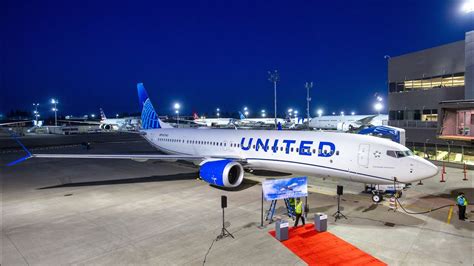The ability for an airplane to fly 18, and soon 19 or 20 hours non-stop is wonderful if you enjoy a very long airplane ride. But many would rather not be stuck in a seat for 20 hours, even in a full sleeper business class seat. Personally, a 2-hour connection that allows me to stretch my legs, do a bit of shopping, or relax in a lounge before traveling onward is a much better solution than an 18-hour marathon flight. I’d rather take an 8 and a 10, with a couple hours in between, but arrive a bit less frazzled. I like to stretch my legs and breathe fresher air.
The Availability of Connecting Service and Competition
Connecting flights are generally available through multiple hubs, while long-haul non-stops are typically monopoly routes. Often, taking a connection is less expensive, as a yield premium for nonstop flights exists in many markets. Competition and lower fares provide another incentive for connecting versus non-stop ultra long-haul operations.
For ultra-long haul routes, business yields are critical. Filling the premium cabins with time-sensitive travelers is the key to financial success. But how much time and productivity is actually saved with ultra long-haul flights?
A business traveler might be able to sleep eight hours on the flight and attempt to adjust to a new time zone. But even a sleeper seat and a long snooze can’t eliminate changed circadian rhythms or eliminate jet lag entirely. Arriving in time to go straight to work the next business day can be important for some, but most business travelers recognize that at least some transition time, usually arriving the day before a meeting, is necessary for peak performance. How much difference does another couple hours really make?
Passenger comfort is another factor in long-haul markets, and Emirates has exploited the A380, and its high level of passenger preference, at its Dubai hub. Ultra-long haul aircraft tend not to be as comfortable as the super-jumbos, which is quite important in economy class or higher yield premium economy. Many economy passengers prefer the trade-off between comfort and a stop and the convenience of a non-stop flight. In business class, the differential isn’t as great.
Ultra-Long Haul Aircraft Have Limited Demand and Low Residual Values
The market for ultra-long haul airplanes has also been quite limited. The A340-500 was a market failure, as is the 777-200LR, with fewer than 100 aircraft produced between them. The demand for an ultra-long haul aircraft simply isn’t there, and the residual values for those type of aircraft are typically quite limited. From the 747SP to the A340-200 to the A340-500 and 777-200LR, they have typically, within a decade of introduction, been replaced by larger aircraft with an equal range that rendered them uneconomic. A sane fleet planner would say no, or ensure a short-term lease to avoid being locked into a soon to be obsolete aircraft.
Without a compelling reason to operate a long non-stop flight (e.g. very high yields) it makes no sense to invest in an ultra-long-haul aircraft that history tells us will be rendered technologically obsolete during the first half of its potential operating life.
The Gulf Three Benefit from Geography
Location is a substantial element in the attractiveness of the Gulf Three, who have a geographic advantage in being a connecting point on the Silk Road between Europe and Asia, and now Africa, North America, and Latin America to Asia as well. The bulk of global trade flows along this path. The Gulf carriers are capitalizing on their locational advantage.
Leveraging that geographic advantage with new aircraft, superb service, and new airports with modern amenities, translates into competitive advantage for the Gulf Three and their connecting hubs in Doha, Dubai, and Abu Dhabi. The attractiveness of this combination is such that Emirates, for example, is able to routinely fill A380s while competing airlines struggle to do so. The combination of geography and passenger preference makes long-haul connecting flights work well.
The Bottom Line:
While operating the world’s longest flight is interesting, it makes sense only if one can earn an appropriate return on the investment in aircraft and infrastructure. There is the risk in acquiring an aircraft that will turn out to be uneconomic in a few short years. Does it make financial sense for an aircraft OEM to create those variants for just a few potential orders? Does it make sense for leasing companies to acquire assets that are most likely to rapidly decline in value? Does it make sense to offer non-stop service simply because it can be done, or should the economic contribution to the bottom line be the primary decision metric?
With speeds currently limited using subsonic aircraft, the ability to extend a flight may soon be much longer than the normal human can spend in the air, potentially confined to space constraints and the atmosphere inside an aircraft for 20 hours. For me, until we can cut that time down with an SST, I’d rather stop, stretch my legs, and connect to a different aircraft. Let us know if you agree in the following poll:
[poll id=”5″]
[poll id=”6″]
Views: 3




I think there’s a societal angle to this: for many of us who don’t travel too often (a couple of times a year max) and who connect in faraway cities that have to much to offer, to discover, we often just try to get there as quickly as possible. Same in cars. Especially men (guilty as charged), we’ll do pit stops to put Formula1 pit crews to shame. We see something that looks fun on the side of the highway where we could stretch our legs, take a bite and learn about something in some micromuseum. But no, we’re doing good time, throw gas in the tank, grab a bad of chips and if we just hit the gas pedal a little more, we can catch up those “lost” 10 minutes at the pit stop… It would be funny if it weren’t sad. We hurry to get home to our families and work only to be super tired and wanting to crash in the sofa in front of the family who wants to get going. I propose this instead: tell your employer, your family (everyone) that your 4 day conference is a 5 days conference + travel time (well, tell the truth but explain the psychological plan):
– 20h flights with great stop over points = an overnight stay with an evening catching a theater play, a movie, something. Or read a book in a big park in that city. This is where you spend your “family points” that you’ve earned for your “personal time”
– promise that the extra day you spent on your alone time will have “great return on investment” for work and the family. You will come back with great stories to tell, your kids will be proud of you, you won’t be grouchy, you’ll feel fulfilled, etc. Just for one extra day. They’ll barely notice.
I think I’m on to something. We should start a travel manifesto and take back our lives. Because we are the ones making the stupid pit stops to save 20 minutes on a 12h drive. There’s nobody watching, who cares about that great pit stop. Two weeks ago, we were stuck in traffic in Connecticut and decided to stop at the PEZ factory (you know that candy with the movable head that dispenses candy?). Well, traffic subsided while we learned everything we need to know about PEZ and even left with a bucket of PEZ and 4 free PEZ dispensers. It couldn’t been a boring 12h drive. Instead, we have PEZ dispensers and candy for weeks. We get to chose who we go through life. Travel times can be slowed by 20% and made into mini adventures.
Pierre